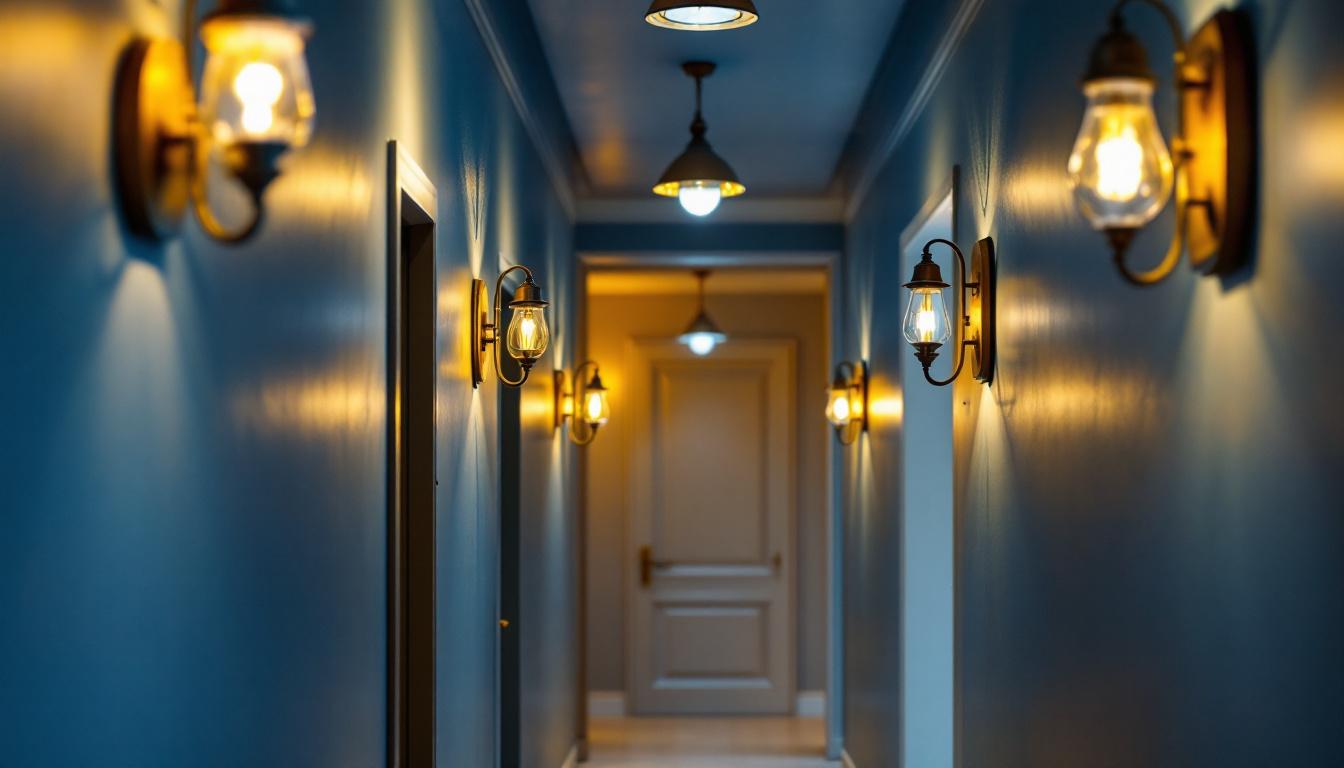
As the demand for energy-efficient lighting solutions continues to rise, lighting contractors are increasingly tasked with replacing traditional lamps with LED alternatives. One common challenge faced in this transition is the replacement of PL 18 lamps. This article provides a comprehensive checklist to guide lighting contractors through the process of replacing PL 18 lamps with LED options, ensuring a smooth and efficient installation.
PL 18 lamps are compact fluorescent lamps that are widely used in commercial and residential settings. They are known for their energy efficiency compared to traditional incandescent bulbs, yet they still consume more energy than LED alternatives. Understanding the specifications and applications of PL 18 lamps is crucial for contractors when considering replacements.
PL 18 lamps typically have a wattage of 18 watts and are designed to fit into specific fixtures that accommodate their unique base types. They come in various color temperatures, ranging from warm white to cool white, making them versatile for different lighting needs. When replacing these lamps, contractors must consider the lumen output and color rendering index (CRI) to ensure the new LED options meet or exceed the performance of the existing lamps. Furthermore, PL 18 lamps generally have a lifespan of around 10,000 hours, which is significantly longer than that of incandescent bulbs, yet shorter than many LED options. This longevity makes them a popular choice for settings where maintenance access is limited, reducing the frequency of replacements and associated labor costs.
PL 18 lamps are commonly used in a variety of settings, including offices, retail spaces, and public buildings. Their compact design allows them to fit into tight spaces, making them ideal for recessed lighting and surface-mounted fixtures. Understanding where these lamps are used will help contractors select the most appropriate LED replacements that can deliver similar or improved lighting quality. In addition to their use in commercial environments, PL 18 lamps are also found in educational institutions, where they provide bright, efficient lighting for classrooms and hallways. Their ability to produce consistent light without flickering or harsh glare makes them particularly suitable for environments where visual comfort is essential for productivity and learning. Moreover, as sustainability becomes increasingly important, many businesses are opting for PL 18 lamps as a transitional solution while they plan for a complete switch to LED technology, which can offer even greater energy savings and environmental benefits.
Switching from PL 18 lamps to LED alternatives offers numerous advantages. These benefits not only enhance the quality of lighting but also contribute to cost savings and environmental sustainability.
LEDs are significantly more energy-efficient than PL 18 lamps. While PL 18 lamps consume 18 watts, equivalent LED replacements can provide the same lumen output with only 10 to 12 watts. This reduction in energy consumption translates to lower electricity bills for clients, making LED solutions an attractive option for both contractors and end-users. Additionally, the efficiency of LEDs means they generate less heat compared to traditional lighting options, which can further reduce cooling costs in commercial spaces, enhancing overall energy savings.
LED lamps have a much longer lifespan compared to PL 18 lamps. While a typical PL 18 lamp may last around 10,000 hours, LED alternatives can last up to 25,000 hours or more. This durability reduces the frequency of replacements, resulting in lower maintenance costs and less hassle for both contractors and clients. Furthermore, the extended lifespan of LEDs means that they are less likely to fail unexpectedly, allowing for more predictable maintenance schedules and minimizing disruptions in both residential and commercial environments.
With growing concerns about environmental sustainability, the switch to LED lighting is a responsible choice. LEDs contain no harmful substances like mercury, which is present in fluorescent lamps. Furthermore, their lower energy consumption contributes to reduced greenhouse gas emissions, making them a greener option for lighting solutions. The manufacturing process of LEDs also tends to have a smaller carbon footprint compared to traditional lighting technologies, as they require fewer raw materials and less energy to produce. This holistic approach to environmental responsibility not only benefits the planet but also aligns with the increasing demand from consumers for eco-friendly products.
In addition to their energy efficiency and longevity, LEDs provide superior quality of light compared to PL 18 lamps. They offer a range of color temperatures, allowing users to select the perfect ambiance for any space, whether it’s a warm, inviting glow for a home or a bright, focused light for an office. Moreover, LEDs have excellent color rendering capabilities, which means they can accurately display colors as they would appear in natural light. This quality is particularly important in settings such as art galleries or retail spaces, where the true representation of colors can significantly impact the overall aesthetic and customer experience.
When replacing PL 18 lamps with LED alternatives, lighting contractors should follow a structured checklist to ensure a successful transition. This checklist covers key considerations, from initial assessments to final installations.
Before beginning the replacement process, contractors should conduct a thorough assessment of the existing lighting setup. This includes evaluating the number of fixtures, the type of ballast in use, and the overall lighting requirements of the space.
Understanding the layout and function of the area will help in selecting the right LED replacements. For instance, a retail space may require brighter, more vibrant lighting to showcase products, while an office may benefit from softer, more diffused lighting for a comfortable work environment. Additionally, it is crucial to consider the ceiling height and the placement of fixtures, as these factors can significantly influence the effectiveness of the new lighting. Areas with higher ceilings may require LED options with higher lumen outputs to ensure adequate illumination reaches the floor.
Once the assessment is complete, contractors should focus on selecting the appropriate LED replacements. Factors to consider include wattage, lumen output, color temperature, and compatibility with existing fixtures and ballasts.
It is essential to choose LED lamps that are designed for direct replacement of PL 18 lamps. This ensures that they will fit properly in the existing fixtures without requiring additional modifications. Furthermore, contractors should verify that the chosen LEDs have a high CRI to maintain the quality of light that clients expect. In addition to these technical specifications, it is also beneficial to consider the energy efficiency ratings of the selected LEDs. Many modern LED lamps offer significant energy savings compared to traditional PL 18 lamps, which can lead to reduced utility costs over time and a lower carbon footprint.
The installation process for LED replacements should be carried out with care to ensure safety and efficiency. Contractors should follow these steps:
Moreover, during the installation, it is prudent to document any changes made to the lighting system. This can include noting the type of LED lamps installed, their wattage, and any adjustments to the fixture configuration. Such documentation can be invaluable for future maintenance or upgrades, allowing contractors to track the performance of the new lighting over time. Additionally, educating clients on the benefits of LED technology, such as longer lifespan and lower maintenance needs, can help them appreciate the value of the investment they are making in their lighting infrastructure.
After the installation of LED replacements, there are several important considerations to ensure long-term satisfaction for both contractors and clients.
Educating clients about the benefits of their new LED lighting is crucial. Contractors should explain the energy savings, longevity, and environmental advantages of the new lamps. Providing clients with information on how to care for their new lighting can also enhance their experience and satisfaction.
While LEDs require less maintenance than traditional lamps, it is still important to establish a maintenance plan. Contractors should offer support for any issues that may arise, ensuring that clients feel confident in their investment. Regular check-ins can help identify any potential problems early and maintain optimal performance.
Gathering feedback from clients after the installation can provide valuable insights into the effectiveness of the new lighting. This feedback can guide future projects and help contractors refine their approach to LED replacements. Continuous improvement is key to maintaining a competitive edge in the lighting industry.
Replacing PL 18 lamps with LED alternatives presents a significant opportunity for lighting contractors to enhance their service offerings while promoting energy efficiency and sustainability. By following a structured checklist that includes assessment, selection, installation, and post-installation considerations, contractors can ensure a successful transition that meets the needs of their clients.
As the lighting industry continues to evolve, staying informed about the latest technologies and trends will be essential for contractors to thrive. Embracing LED replacements not only benefits clients but also positions contractors as leaders in the push for greener, more efficient lighting solutions.
Ready to lead the charge in energy-efficient lighting solutions? LumenWholesale is your trusted partner, offering an extensive selection of spec-grade LED products that meet the highest industry standards. Say goodbye to local distributor markups and hello to top-quality lighting at unbeatable wholesale prices. With free shipping on bulk orders, you can stock up on reliable, high-performance lighting for all your projects without any hidden fees. Make the smart choice for your business and your clients by choosing Wholesale Lighting at the Best Value. Upgrade to LumenWholesale today and experience the perfect blend of quality, affordability, and convenience.

Discover the top challenges lighting contractors face in the industry and how a Rejuvenation Lighting promo code can offer solutions.

Discover the essential guide for lighting contractors on outlet switches, covering installation tips, safety protocols, and innovative solutions to enhance your projects.

Discover expert insights on overcoming challenges in installing exterior lights with motion sensors.

Discover the top light fixtures that transform hallways into inviting spaces while enhancing functionality.